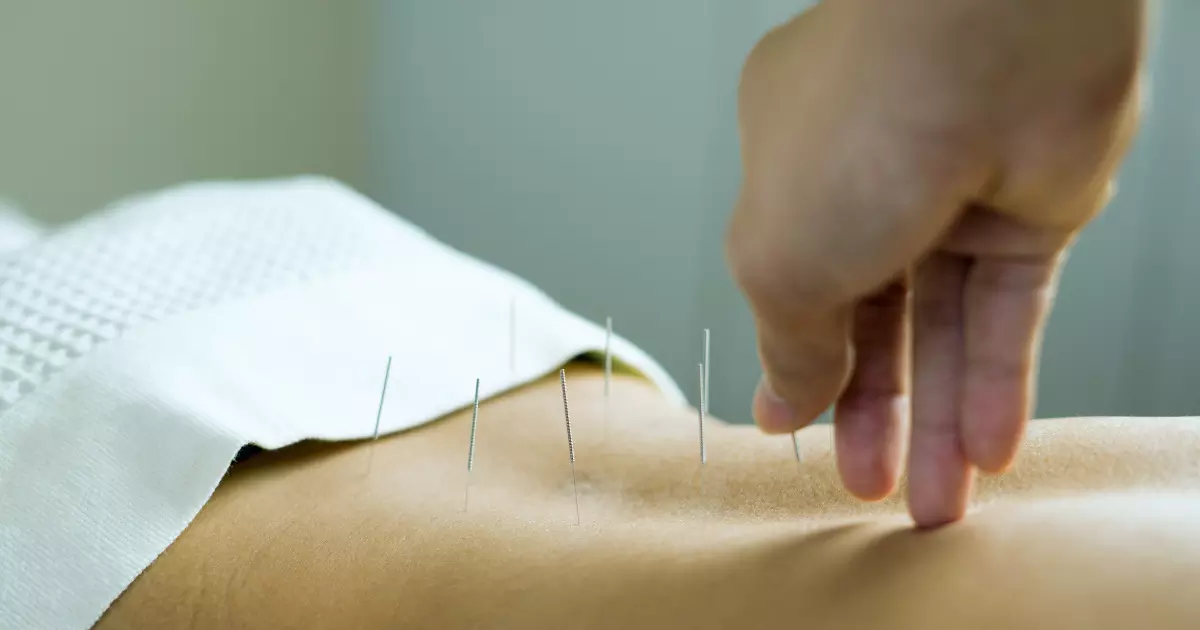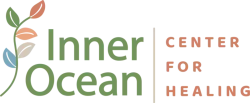Are you suffering from sciatica? Sciatica is a type of pain that radiates along the path of the sciatic nerve. The pain runs from the lower back through the buttocks and down to one leg. The severity of pain can vary from a mild ache to a sharp, burning sensation.
In the quest for relief, many individuals are turning to alternative treatments to mitigate their discomfort. Among those is acupuncture which stands out as a promising option. This ancient Chinese medicine technique involves the insertion of thin needles into specific points on the body. It is believed to stimulate the nervous system and influence the flow of vital energy or Qi. Thus, it promotes healing and pain relief.
In this article, we’ll unravel the intricate connection between acupuncture and sciatic pain relief. Keep reading to gain insights into the acupuncture process, understand the key points targeted, and discover the potential benefits. Whether you’re seeking complementary therapy or expanding your knowledge of holistic approaches, this guide provides a concise overview of how acupuncture fits into a comprehensive strategy for alleviating sciatica symptoms.
What is Sciatica?
As mentioned above, sciatica is a type of chronic pain that runs from the lower back down to the leg. Typically, sciatica affects only one side of your body, often manifesting as significant leg pain. Contrary to what most people think, this is not a medical condition. Rather, it is a symptom of an underlying problem often related to compression or irritation of the sciatic nerve.
Usually, it happens when a disk in the spine bulges or a bone spur grows. It can also occur if the spine narrows and presses on the nerve. This compression causes inflammation, sciatic pain, and often some numbness in the affected leg.
Sciatic pain from sciatica is often intense. Yet, it usually gets better in a few weeks with simple treatments. Among those is acupuncture therapy. But, people with very bad sciatica, leg weakness, or problems with their bowel or bladder might need surgery.
What Are The Causes of Sciatica?

Acute or chronic sciatica stems from issues like lumbar disc herniation or intervertebral disc problems. In a nutshell, it is primarily due to a pinched sciatic nerve. Often, this pinch comes from herniated discs where the disc’s core protrudes and presses against the sciatic nerve roots. Lumbar spinal stenosis is another cause. Due to aging, the spinal canal in the lower back becomes narrow which tightens around the nerve roots.
Another culprit is spondylolisthesis. It occurs when one vertebra slips over another. This disturbs the spine’s alignment and pinches the sciatic nerve. Although less frequent, the piriformis syndrome can also happen. The piriformis muscle in the buttocks clenches the nerve and causes spasms. This can potentially irritate or pinch the sciatic nerve.
Traumatic events, such as accidents, falls, or sports injuries can lead to sciatic nerve compression as well. While less common, tumors within the spine may exert pressure on the sciatic nerve roots. In rare instances, infections in the lower spine can impact the nerve. This triggers sciatica symptoms like pain, numbness, and mobility issues. Each condition demands a tailored examination and specific treatment to alleviate nerve pressure and the accompanying symptoms. Acupuncture, for instance, has shown promise in clinical trials when it comes to managing nerve pain. It was found that it plays a significant role as a treatment for sciatica. The therapeutic effects of acupuncture offer notable relief for its symptoms
Additionally, osteoarthritis can lead to the formation of bone spurs that press on the sciatic nerve roots and cause degenerative changes. During pregnancy, the increased weight and pressure on the spine can compress the sciatic nerve. This can also lead to the development of sciatica.
Understanding the specific cause is crucial for the treatment of sciatica. Each underlying issue requires a tailored approach to alleviate the symptoms and address the root of the problem. Non-surgical interventions such as physical therapy, medications, and exercises can facilitate the healing process. These can also improve quality of life.
How Does Acupuncture Help Sciatica?
Acupuncture provides a compelling approach to managing sciatica. It blends traditional techniques with a modern understanding of neurology and pain management. This method focuses on the strategic placement of needles to stimulate points along the body’s meridians. It restores energy flow and balance which, in traditional Chinese medicine, is believed to be disrupted in states of illness or pain.
In the context of sciatica, acupuncture targets areas that correlate with the underlying causes of nerve irritation and inflammation. The idea is that stimulating these points can enhance blood circulation and reduce muscle tension. Hence, triggering the release of endorphins and other natural painkillers in the body. These biochemical changes may help in reducing the perception of pain. They improve pain control and potentially aid in the healing process of the affected nerve pathways.
Research into the efficacy of acupuncture suggests that it can significantly impact pain relief in sciatica cases. Many patients have experienced a decrease in pain intensity scores and showed improvement in quality of life. This is particularly relevant for those seeking a conservative treatment option. Acupuncture presents a lower considerable risk of adverse effects compared to surgical interventions or long-term medication use.
Moreover, the safety of acupuncture for the patients is notable when performed by trained professionals. The risk of complications like hypodermal bleeding or stomach ache is minimal. This makes it a viable option for individuals looking for a less invasive therapy for sciatica. It’s also worth noting that acupuncture can complement other treatments by enhancing pain threshold, limb function, and overall motor function without interfering with conventional medical therapies.
For those considering this method, it’s essential to view it as a series of acupuncture treatment sessions rather than a one-off solution. The treatment of acupuncture points requires consistency. Also, a personalized approach during acupuncture sessions ensures that the treatment method is aligned with the patient’s needs. This maximizes the potential for pain relief and functional improvement.
Overall, acupuncture offers a promising avenue for the treatment of sciatica. This is particularly beneficial for those affected by conditions like lumbar disc herniation. Its approach to enhancing the body’s natural healing capabilities and managing pain makes it a valuable component of a holistic treatment plan.
What Are The Benefits of Acupuncture for Sciatica?

Acupuncture offers a multifaceted approach to the treatment of sciatica. This treatment method is recognized for its efficacy in pain management, anti-inflammatory effects, and mobility enhancement. It alleviates the immediate symptoms while ensuring the safety of acupuncture with minimal considerable risk.
For those on the path to recovery, acupuncture stands as a testament to the power of integrating traditional wisdom with contemporary therapeutic practices. This offers a holistic and effective route for patients with sciatica.
Pain Reduction
The cornerstone of acupuncture’s benefit for sciatica lies in its profound pain reduction capabilities. By strategically inserting needles at specific acupuncture points, it taps into the body’s meridian system. Then, it stimulates the release of natural painkillers like endorphins and serotonin. This mechanism not only lowers the pain intensity score but also helps recalibrate the body’s pain threshold offering deep, sustained pain relief. This treatment also addresses nerve pain.
Decreased Inflammation
Beyond mere pain alleviation, acupuncture shines in its ability to quell inflammation. The precise placement of needles works to promote better circulation and reduce the inflammatory markers in the body. This is particularly beneficial for conditions like intervertebral disc herniation or lumbar disc issues that often underlie sciatica. By mitigating inflammation, acupuncture not only eases the physical signs of discomfort. It also sets the stage for more effective healing. This makes it a preferred conservative treatment for many seeking a solution with minimal adverse effects.
Improved Mobility
Enhanced mobility is another key advantage that acupuncture brings to the table for patients with sciatica. The relief from pain and reduction in inflammation naturally lead to greater flexibility and range of motion. This improvement in limb function and motor function is crucial for regaining the ability to perform daily activities without the shadow of discomfort. This holistic improvement is among the efficacies of acupuncture which can be added to the comprehensive therapy for sciatica. Those seeking a return to normalcy and an active lifestyle after a prolonged period of sciatic pain will benefit from this.
What to Expect from Acupuncture for Sciatica?
If you’re thinking about using acupuncture to relieve sciatica pain, it’s good to know what to expect. This can make you feel more at ease and ready for the treatment. Here’s a breakdown of what you might experience.
Initial Consultation
During the initial consultation for sciatica, the healthcare provider reviews the patient’s medical history. He/she will take a look at the current symptoms and conduct a physical examination to assess nerve function and mobility. This session is essential. It helps in understanding the patient’s condition and determining why their sciatic nerve is irritated. After the evaluation, the provider might recommend more tests. He/she will make a treatment plan just for the patient.
During Acupuncture Treatment Sessions
During acupuncture sessions, patients experience a calm and healing atmosphere that promotes relaxation. The acupuncturist starts by inserting thin, clean needles into certain points on the body called acupuncture points. These points are connected to the health problem that a patient may be experiencing like sciatica pain. Inserting the needles is usually gentle. Patients may feel slight discomfort similar to prick. They may also feel tingling or dull ache at the needle sites. This is often seen as a sign that the treatment is working.
After placing the needles, the retention time of the needles is usually ranging from 20 to 30 minutes. During this time frame, patients become very relaxed or even fall asleep. The acupuncturist might adjust the needles by twirling or gently pulsing them to enhance the therapeutic effect. The session aims to rebalance the body’s energy, reduce pain, and help natural healing. The experience is meant to be calming and refreshing.
After The Sessions
After acupuncture for sciatica, patients usually feel better right away. However, each person’s reaction to the treatment can differ. Some people might feel less sciatic pain and move better right away. Others might get better slowly over several sessions. After a treatment, it’s normal to feel relaxed or a bit tired because your body’s natural healing starts. Minor side effects can happen as well. Common examples are small bruises and soreness where the needle went in. But there’s nothing to worry about as these usually go away fast.
Additional Considerations
When addressing sciatica, several additional considerations are crucial for effective management and recovery. Lifestyle factors play a significant role. It is essential to maintain a healthy weight to reduce pressure on the spine. It is also best to adopt ergonomic practices to minimize strain during daily activities. Engaging in regular, low-impact exercise to strengthen the back and core muscles can also enhance spiral support.
Nutritional aspects should not be overlooked as well. Make sure to have a balanced diet rich in anti-inflammatory foods that can aid in reducing nerve inflammation. Mental health is also a key component. Stress management techniques such as meditation, yoga, or mindfulness are beneficial in alleviating stress-induced muscle tension that can exacerbate sciatic pain.
Lastly, exploring complementary therapies like chiropractic care under the guidance of healthcare professionals can offer additional relief. This can support the overall body’s natural healing process. These holistic approaches, coupled with conventional medical treatments, provide a comprehensive strategy for managing sciatica.
How Long Does Acupuncture Treatment Take for Sciatica?

Acupuncture sessions typically last between 20 to 60 minutes. The duration can vary based on the acupuncturist’s approach, the complexity of your condition, and your treatment plan. The initial session may be longer due to the need for a comprehensive assessment of your health history and specific needs related to your sciatica pain. Subsequent sessions may be shorter. Acupuncturists will focus on applying acupuncture needles and other therapeutic techniques during this session.
How Many Acupuncture Sessions Are Typically Required for Sciatica?
The number of acupuncture sessions required to treat sciatica relief can vary due to several factors. Usually, these include the severity and duration of your sciatica symptoms, your overall health, and how your body responds to acupuncture. Acute sciatica pain might require fewer sessions. In terms of pain intensity, those with chronic conditions will be required to undergo a more extended series of treatments. Here’s the breakdown of the number of sessions your acupuncturist might require.
- Initial Phase. For many individuals, an initial course of treatment might consist of 6 to 12 sessions. These sessions may occur 1 to 2 times per week. This duration allows the practitioner to assess the effectiveness of the treatment and make any necessary adjustments if needed.
- Assessment and Adjustment. After the initial phase, your acupuncturist will evaluate your progress to determine the need for further sessions. Some people may experience significant improvement within the first few sessions. While others might need a longer duration to achieve noticeable benefits.
- Long-Term Management. Once the initial symptoms are addressed, some individuals may benefit from periodic maintenance sessions to manage pain and prevent recurrence. This could mean scheduling sessions monthly or at another interval recommended by your acupuncturist.
- Personalized Treatment Plans. Acupuncture treatments are highly individualized. Your practitioner will tailor the number and frequency of sessions to your specific needs. He/she will adjust the treatment plan as your condition improves. That’s why it is essential to communicate openly with your acupuncturist about your progress. Share the concerns you have throughout the treatment process. This will help ensure the treatment plan is optimized for your unique situation.
How Much Does Acupuncture for Sciatica Typically Cost?
The cost of acupuncture sessions varies due to some factors. Those include the practitioner’s expertise, session length, and location. Typically, the rates range from $75 to $150. We encourage you to explore insurance options. Some health insurance plans may cover acupuncture, especially if it’s recommended as part of a larger treatment plan for conditions like sciatica. Inquire with your insurance provider to understand what is covered under your plan.
Also, many acupuncturists offer package deals if you purchase multiple sessions upfront. Make sure to inquire to reduce the overall cost per session. Some clinics offer community acupuncture. Here, treatments are performed in a group setting at a lower cost. This can be a more affordable option. The sessions typically range from $20 to $50 only.
What Are The Side Effects of Acupuncture for Sciatica?

Acupuncture is widely used for a variety of conditions. It offers effective solutions for chronic pain and stress management. While many tout its benefits and consider it a safe alternative or complementary treatment, it’s essential to acknowledge that, like any medical treatment, acupuncture can have adverse effects. Here are the side effects you may experience after the treatment.
- Minor Bruising or Bleeding. Some individuals might experience minor bruising or bleeding at the needle insertion sites.
- Soreness. Mild soreness or tenderness may occur at the sites where needles were inserted. But these usually subsides within a few hours to a few days.
- Fatigue. Some people may feel tired after an acupuncture session. While others may experience a boost in energy levels.
- Emotional Release. Acupuncture can sometimes trigger an emotional response. This is likely due to the release of pent-up emotional tension. It is generally considered a positive aspect of the healing process.
- Infection. There’s a low risk of infection if the needles used are not sterile. However, this is rare. Most acupuncturists use pre-packaged, single-use, sterile needles.
- Organ Injury. Very rarely, if a needle is inserted too deeply, it could injure an internal organ. This risk might happen if needles are placed on the torso.
- Nerve Damage. Improper needle placement or depth of insertion could lead to nerve pain. But this is extremely rare and only occurs when done by an unqualified practitioner.
Special Considerations
- Pregnancy. Certain acupuncture points are believed to stimulate labor which could pose a risk for pregnant women. If you’re pregnant, inform your acupuncturist about your pregnancy during the initial consultation.
Wrapping Up
Acupuncture presents a compelling and holistic approach to managing sciatica. By blending the wisdom of ancient practices with the precision of modern holistic healthcare, this gentle yet effective therapy offers a beacon of hope. Through its remarkable ability to alleviate pain, it empowers individuals to reclaim their daily routines and engage in life’s activities with renewed vigor and less discomfort.
At Inner Ocean Center for Healing, we’re committed to guiding you through your health journey with care and expertise. If sciatica is affecting your life, consider acupuncture as a pathway to relief and recovery. Our team is here to support you. Reach out today to explore how acupuncture can enrich your journey toward a life free from sciatica pain.

